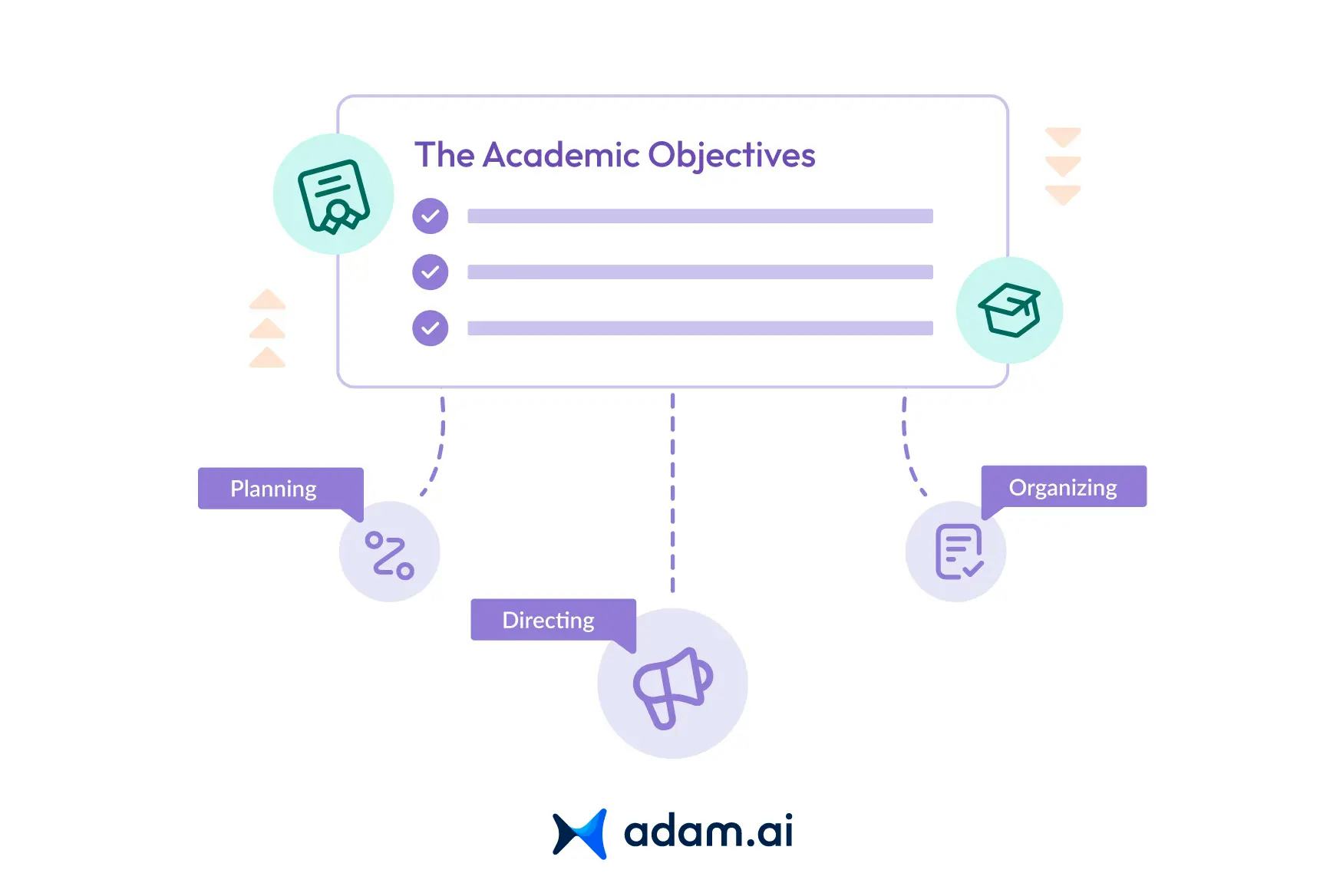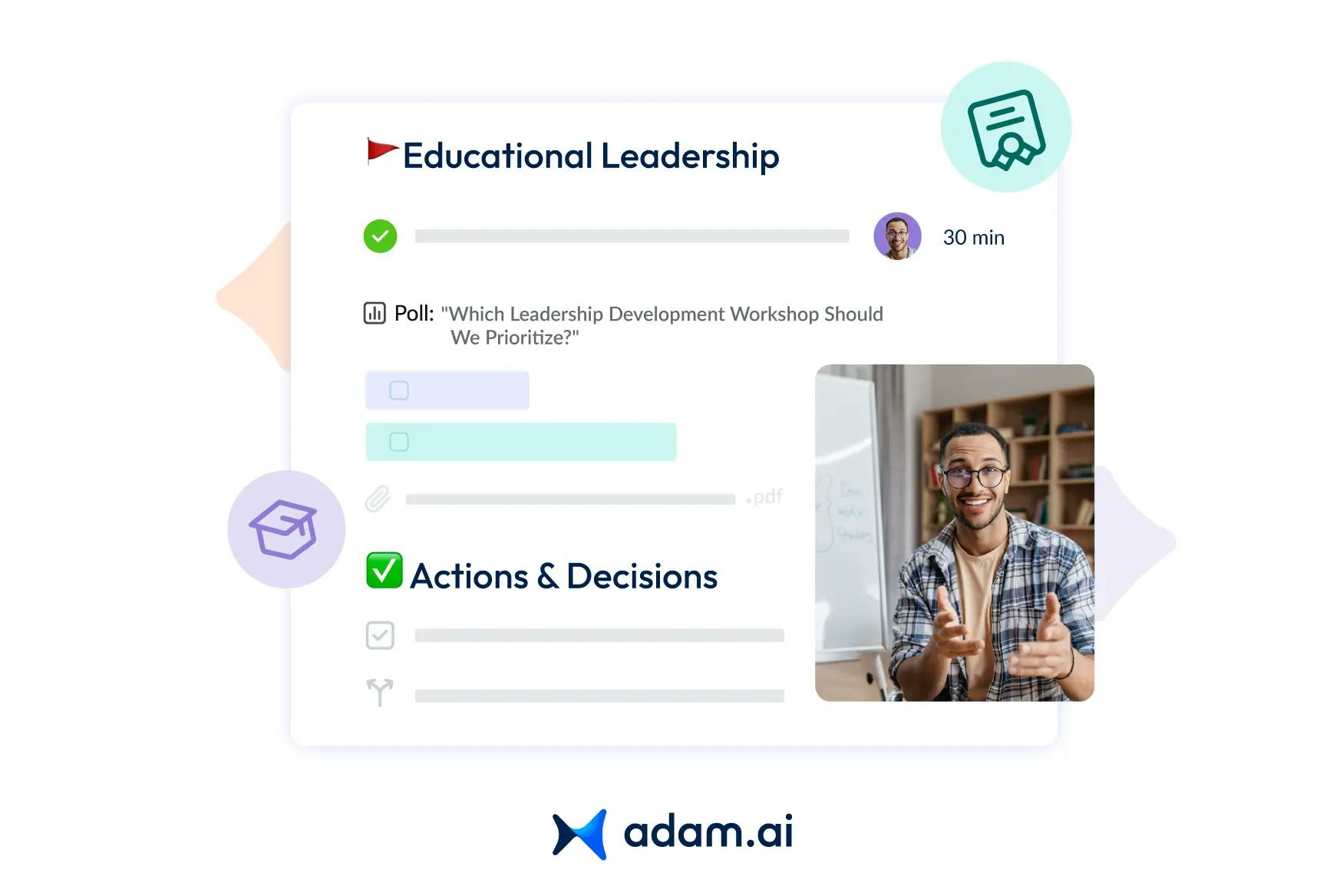Published April 15, 2024
-
7 mins read
How to Optimize a School Board Meeting to Improve Educational Outcomes

Shaimaa Badawi
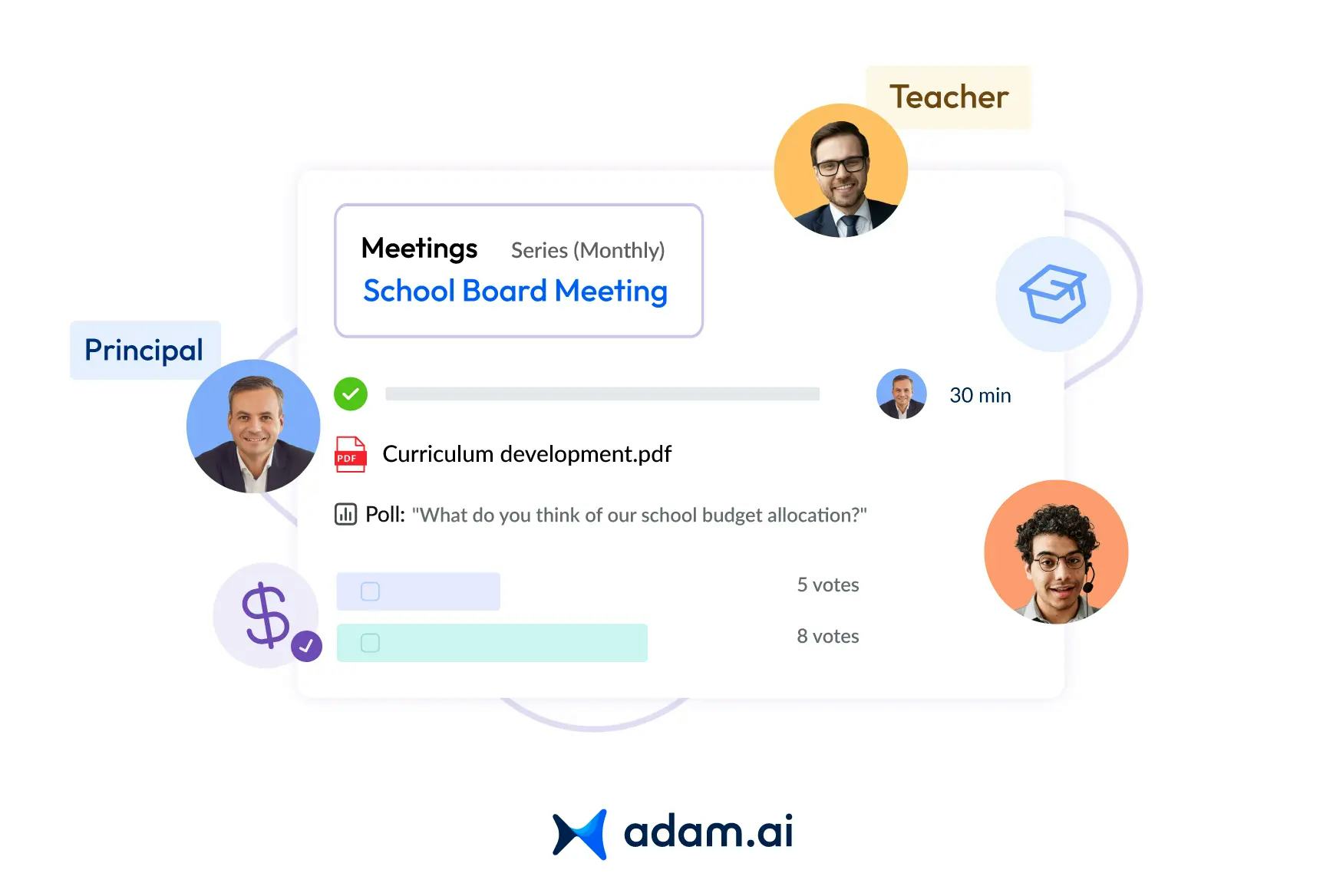
Effective leadership within a school board meeting can profoundly influence educational outcomes. But what makes these meetings more than just a procedural checklist?
This article unveils the key strategies to not only conduct these pivotal gatherings effectively but to also ensure they have a lasting impact on educational quality and student success. Learn how every aspect of a school board meeting can be optimized to drive improvements across classrooms and communities.
What is a local school board meeting?
A local school board meeting is a structured gathering where members of the school board convene to discuss and make decisions on the governance of the district's educational system.
At these meetings, which typically occur monthly, the board addresses a variety of crucial matters, including policy setting, budget approvals, and curriculum development.
Additionally, these meetings provide an opportunity for the public to participate, offering a platform for transparency and community involvement in educational decisions.
During these sessions, board members review and act upon agenda items that have been prepared and made available to the public beforehand, ensuring that all decisions are made in an official capacity and are well-informed by prior committee deliberations.
What is the purpose of the local school board?
The primary purpose of a local school board is to oversee the administration and strategic direction of a school district. School boards play a crucial role in determining the allocation of funds, shaping educational policies, choosing curricula, and establishing guidelines that impact everything from the hiring of superintendents to setting dress codes and managing the operations of schools within the district.
Furthermore, school boards are directly accountable to the community, serving as a bridge between the educational system and the public. They ensure that schools meet community standards and expectations, addressing concerns and incorporating feedback from parents and guardians.
Through regular meetings, they facilitate transparent communication and collaboration among board members and between the board and the public, ensuring that decision-making processes are both democratic and inclusive. By doing so, school boards not only manage the immediate needs of the schools but also contribute to long-term educational goals, ultimately aiming to enhance the quality of education provided to students.
Are school board meetings open to public?
School board meetings are generally open to the public, including regular meetings, work sessions, and retreats, allowing for community involvement and transparency in the governance of school districts.
However, there are exceptions, such as executive sessions, which are not open to the public. These closed sessions typically cover sensitive topics like personnel issues, legal matters, and real estate transactions, which are restricted by law.
Public participation is encouraged at open meetings, where community members can contribute comments on school operations and policies, although specific complaints about individual personnel are usually handled through different procedures. The schedule for these meetings and any changes to them are often posted on school district websites and other official channels to keep the public informed.
What are school board committee meetings?
School board committee meetings are specialized sessions where smaller groups of school board members focus on specific areas of school district governance. Typically, committees are formed around key subjects such as finance, curriculum, personnel, and facilities.
The purpose of these meetings is to allow committee members to delve deeper into topics, examine issues thoroughly, and develop expertise in their respective areas.
During these meetings, committee members can also interact with district staff, experts, and community stakeholders to gain a broader perspective and better understand the implications of potential decisions.
Moreover, school board committee meetings serve as an important link between the school board and the public. This connection helps build trust and fosters a sense of involvement and accountability among community members regarding their local education system.
How do you conduct a school board meeting?
To empower school board members in conducting effective school board meetings, here are step-by-step points designed to guide the process:
1. Preparation and policy enforcement
Begin by ensuring that all board meeting policies and bylaws are understood and enforced. These policies are designed to guide the decision-making process, ensuring that meetings are democratic and effective.
2. Utilize meeting management software
Implement advanced board management technology to streamline meeting processes. This technology should include features like an agenda builder, centralized document storage, and communication tools to enhance collaboration.
3. Comprehensive agenda distribution
Distribute the meeting agenda well in advance. Ensure it clearly outlines the topics of discussion in a logical order, which facilitates a smooth flow from one subject to another.
4. Set up the venue with necessary technology
Equip the meeting venue with necessary technological tools such as projectors and screens, and ensure integration with virtual meeting platforms if necessary to facilitate participation from remote members.
5. Designate roles and communicate details
Assign roles clearly, including a chairperson to oversee the meeting and a secretary to record minutes. Confirm the meeting details with all participants to ensure everyone is informed.
6. Promote active collaboration
Foster an environment that encourages active participation and open dialogue among members. Utilize communication technology to allow board members to express their views effectively, enhancing mutual understanding and decision-making.
7. Follow the agenda closely
Conduct the meeting according to the set agenda, allowing adequate time for discussion on each item and ensuring that discussions remain focused and on-topic.
8. Decision-making
Decisions should be made through formal voting or consensus, with each decision clearly documented and the rationale explained to maintain transparency.
9. Address additional business
Allow time for any unforeseen or urgent matters that arise, ensuring that all relevant issues are addressed comprehensively.
10. Conclude with action items
Summarize the decisions and distribute post-meeting action items. Assign responsibilities for follow-up tasks to specific members or groups, enhancing accountability and ensuring progress toward goals.
11. Formal adjournment
The chairperson concludes the meeting by summarizing the outcomes and confirming the next meeting date, ensuring clarity on all decisions and future expectations.
10 strategic topics for school board leadership discussions
To support constructive and impactful school board meetings, consider bringing up the following examples for discussion:
1. Prioritization of student needs: Explore strategies to ensure all students have equitable access to educational resources, focusing on fairness and opportunity in student support.
2. Boosting parent and community involvement: Discuss methods to increase engagement with parents and the community to strengthen the educational support network.
3. Addressing academic achievement gaps: Identify and implement effective practices to elevate academic performance and bridge educational disparities among student groups.
4. Promotion of innovative teaching and technologies: Encourage the adoption of advanced teaching methods and the integration of new technologies to improve learning experiences.
5. Ensuring student safety and well-being: Establish policies and practices that safeguard the physical and emotional well-being of students within school environments.
6. Recruitment and retention of qualified staff: Develop a plan for attracting and keeping a diverse and skilled workforce to enhance educational quality and student interaction.
7. Effective resource allocation: Delve into the allocation of financial and material resources to meet the evolving demands of the school system and its students.
8. Fostering inclusivity and respect: Promote a school culture that emphasizes respect, inclusivity, and proactive anti-bullying measures to create a supportive learning environment.
9. Strengthening stakeholder communication: Enhance communication channels and collaborative efforts among board members, administrators, teachers, and staff to optimize educational governance.
10. Continuous policy and program evaluation: Discuss ongoing evaluation measures for school policies, programs, and curricula to ensure they remain effective and responsive to student needs.
Optimize school board meetings with adam.ai
To navigate the complexities of educational governance, school boards must leverage modern technology to conduct more effective and efficient meetings.
Here's how adam.ai can serve educational leaders:
1. Streamlined scheduling for collaborative efforts: Streamline the scheduling of school board meetings across various stakeholders, eliminating traditional logistical challenges.
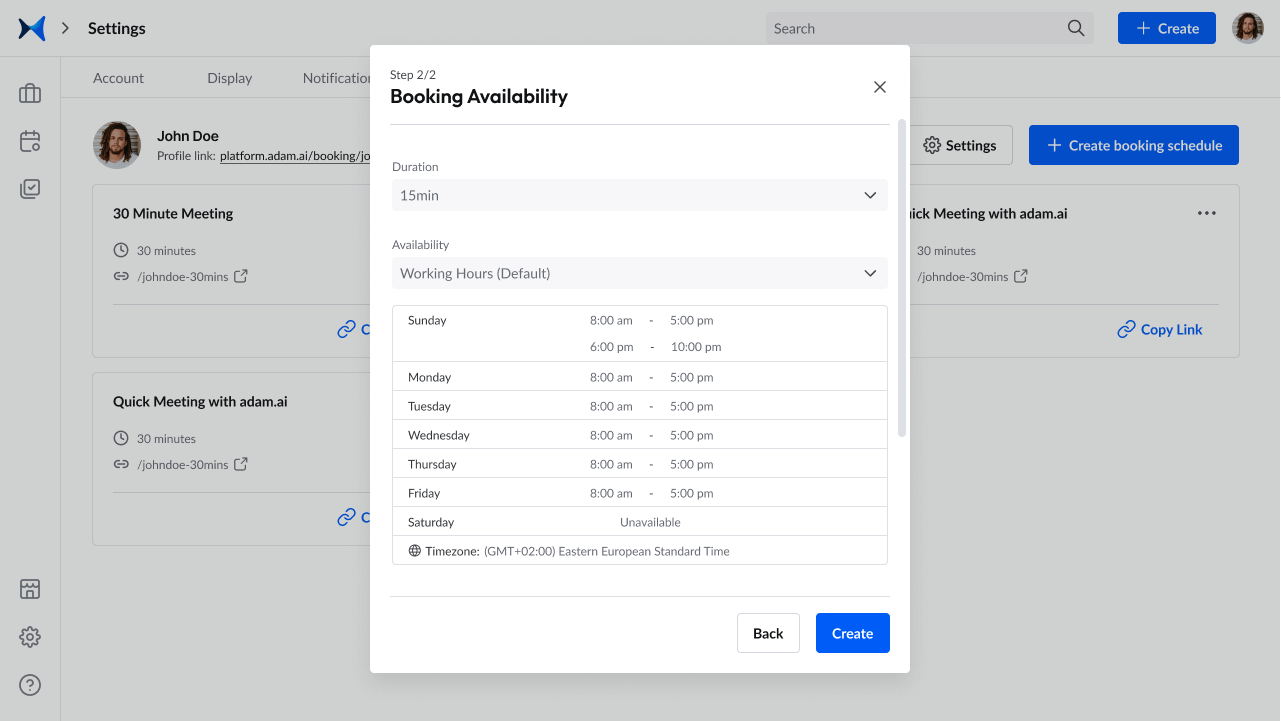
2. Integrated video conferencing and smart note-taking: Utilize integrated video conferencing and smart note-taking to deepen discussions on curricular developments and student support strategies.

3. Action and decision tracking for accountability: Track actions and decisions to ensure accountability and follow-through on educational initiatives, enhancing outcomes.
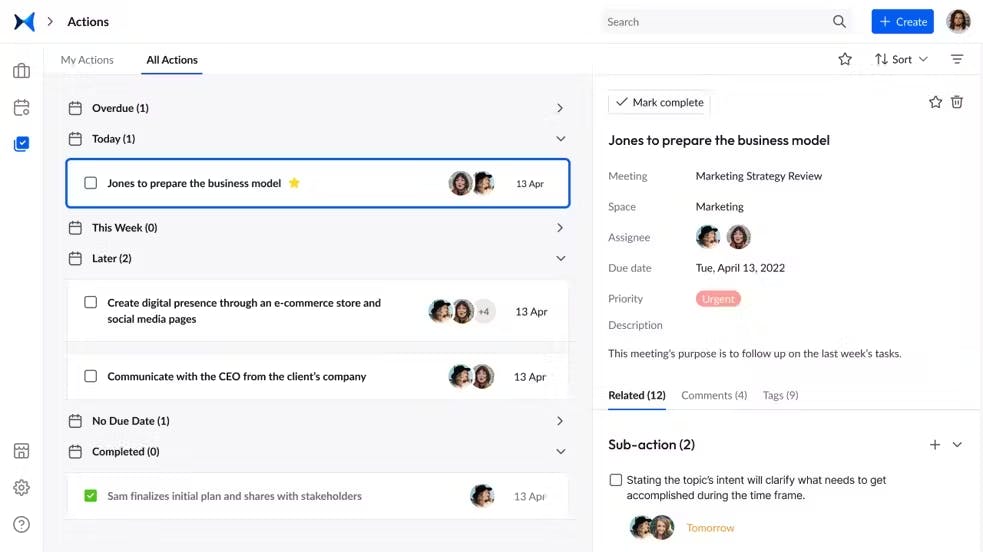
4. Organized meeting and document management: Manage meeting content in a centralized system by categorizing meeting records and educational materials into projects, teams, committees, and boards.
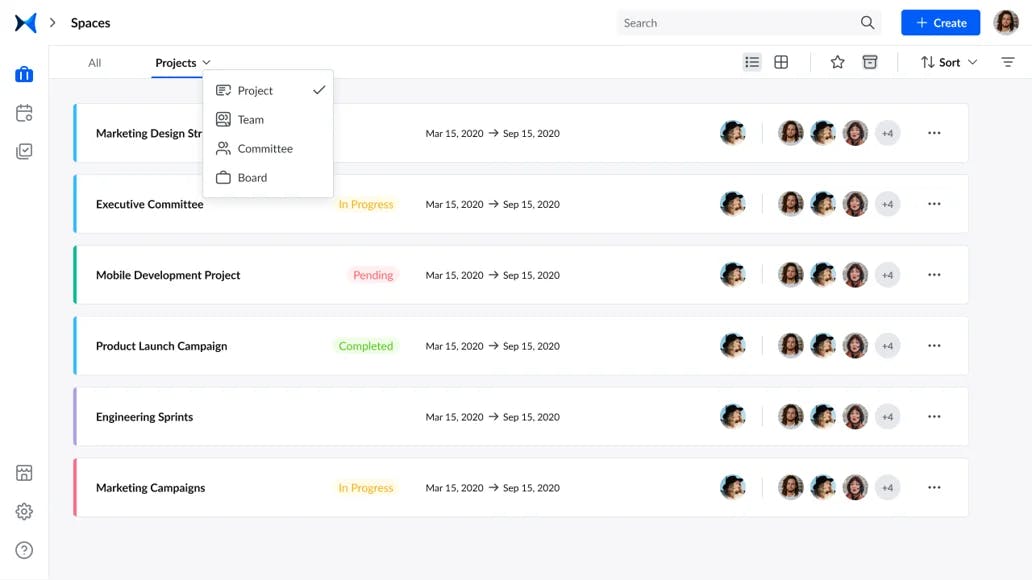
5. Automated meeting minutes for efficient record-keeping: Generate meeting minutes automatically, ensuring key discussions and decisions are documented accurately and promptly.

6. Insightful analytics dashboard for enhanced oversight: Access insightful analytics to evaluate meeting engagement, decision effectiveness, and progress on action items, empowering continuous improvement.

Get started right now to seamlessly run your educational institution through effective meetings.
The bottom line
A school board meeting is not merely a procedural gathering; it's a pivotal arena for shaping the educational strategies that affect numerous stakeholders. By prioritizing strategic discussion topics, leaders can drive substantial improvements in school governance and student outcomes. Remember that leveraging modern technology is key to conducting effective school board meetings.
And while there may be multiple meeting management solutions available, here is why adam.ai is the board management software platform you can trust:
- adam.ai is one of Atlassian Ventures' portfolio companies.
- In the meeting management software category on G2, adam.ai has been ranked a leader and a high performer for successive quarters in the past years.
- adam.ai has been included in the Forrester Report in the AI-enabled meeting technology landscape.
- adam.ai is trusted and used by powerful teams and organizations worldwide for all types of critical meetings, like board, committee, project management, and business development meetings.
- And most importantly, adam.ai integrates with your existing workflow, is SOC2 compliant, provides dedicated support and success, and has a free trial option.
About the author ...
Shaimaa Badawi is an Inbound Marketing Specialist at adam.ai. Her research revolves around meeting management, project management, and board meetings, where she identifies the most daunting meeting pain points that C-level executives, board and committee members, corporate secretaries, and other professionals working in enterprises face in meetings. Based on her findings, Shaimaa provides solutions for inefficient meetings, defines various aspects of corporate-level meetings, and outlines best practices on how to run effective meetings.
Subscribe to our blog
Subscribe to our blog
Get the latest blog posts sent straight to your inbox.

